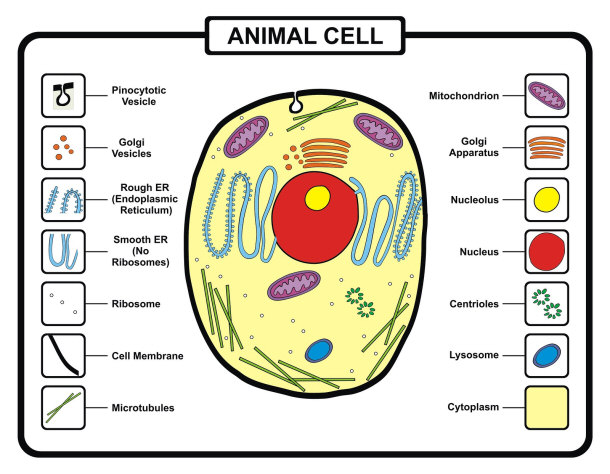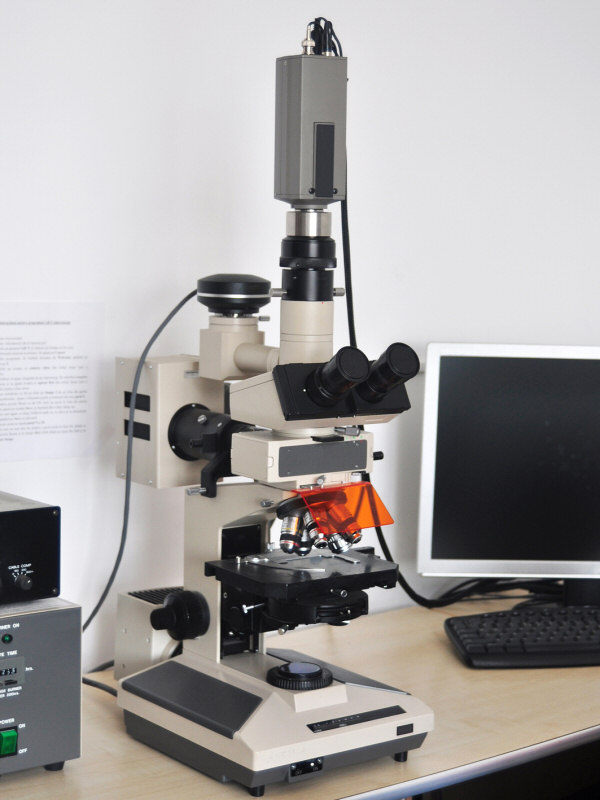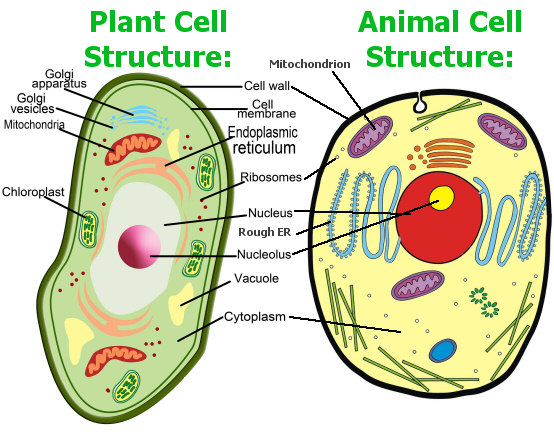An Introduction to the Cells of Organisms
Introduction
Cells of organisms have been studied for hundreds of years. Organisms are
entirely made up of cells, thus making it a worldwide unit of life. An organism
is any living thing, whether it is a plant, an animal or fungi. Some organisms
(known as simple organisms) are composed of only one cell; others are composed
of many more. These are multicellular organisms, human beings being one example.
The first cells to ever be studied closely were those belonging to plants and
animals.

How do we know that organisms are composed of cells?
We know that organisms are composed of cells due to discoveries made possible
through the use of microscopes. The first microscope used to study cells was a
light microscope, however it was soon discovered that much better results were
to come from electron microscopes; they are able to magnify at least 1000 times
more!
It was Robert Hooke in 1665 who first described cells, but it wasn’t until
1838 – 1839 (Schleiein and Schwann) that the cell theory came about. The cell
theory is the basic unit of structure and function of the cell; the key
components. In 1855, Rudolf Virchow discovered that new cells can arise from
pre-existing cells through cell division. Cell division is the process that
creates new cells, making reproduction of life possible, as well as the repair
and growth of cells.
Electron Microscope:

Plant and animal cells: differences and similarities
There are some similarities between plant and animal cells, one of which is
that they both have a plasma membrane. The plasma membrane is the cell
‘barrier’. It is composed of lipids (fats and oils) and effectively controls
what goes in and what leaves the cell. They also both contain organelles, which
are distinct structures within a cell, as well as a nucleus. The nucleus is an
organelle and contains all the genetic material of the cell (otherwise known as
DNA). It controls growth, reproduction and metabolism. It is essentially the
chemical control center of the cell. As well as these similarities, they also
both have what is known as mitochondria. Here, fuel molecules are broken down to
obtain energy (or ATP) through aerobic respiration. This means to use oxygen
during the process of getting energy. Although most animal and plant cells use
aerobic respiration, certain types use anaerobic respiration which means to
obtain energy without the use of oxygen. This isn’t very efficient. Some
fundamental differences between animal and plant cells are as follows; plant
cells have a cell wall. The cell walls of plant cells are made up of complex
carbohydrates. They also contain chloroplasts, which are responsible for the
green coloring of plants. As well as this, they also have a sap vacuole which
helps to hold the plant straight and keep it up right. Some features in animal
cells that aren’t found in plant cells are; centrioles, cilia, and flagella.
Cilia are an extension of the cells cytoplasm, while flagella help to move the
cell from place to place.
Plant and Animal cell Differences:

Cell classification
When study of cells first began, biologists first classified cells as either
‘animal’ cells or ‘plant’ cells. However, it was soon realized that bacteria and
fungi do not fit this classification. Biologists now recognize two kinds of cell
organisms, classified as to what kind of cell they are composed of. The first
kind of cell that biologists can identify is prokaryotes; these cells have no
nucleus, which means that the DNA is effectively ‘naked’ and unprotected inside
the cytoplasm. The ‘pro’ part of the term means ‘before’, as these kinds of
cells were believed to have eventually evolved into the second type of cell.
These types of cells are thought to be the first kinds of cells on Earth! All
bacteria belongs in this group. The second group of cells that Biologists
identify are Eukaryotes. These cells have a nucleus where the entire DNA is
safely contained, and it belongs to animals, plants, fungi, and single celled
organisms.
Conclusion
The study of cells is a fascinating world that has been studied extensively,
meaning that there is a wealth of information available for those who want to
know more.
Biology
An Introduction to the Cells of Organisms
Cardiovascular System and Energy Systems |